We are back in Phnom Penh for 48 hours because we have to collect our visas from the Indian Consulate. Our Indian friends have learnt the craft of bureaucracy from the British but have turned it into an art form. I won’t bore everyone with the process but it involves a lot of queuing, a long wait, and an amount of dollars.
We still cannot form a real impression of Phnom Penh. It does not represent the soul of Cambodia: that is to be found in the countryside. It is not typical of Cambodia either. It does not have the buzz, the vitality or the hustle and bustle of other Asian cities such as Bangkok, Saigon or Hanoi. The streets are quiet. As I said before, it is the enclave of the rich and powerful elite and those that serve them. The bigwigs travel from one air conditioned building to another in their air conditioned 4x4s that have tinted windows and Lexus emblazoned on the vehicles sides. Only the tourists and the western volunteers of countless NGOs use the tuk tuks.
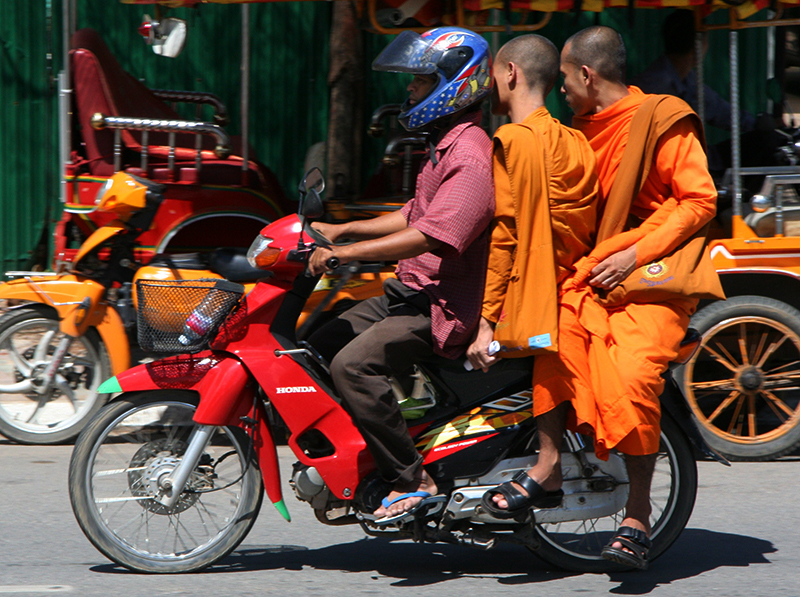 The only other regular road users are the monks. Just after 1.00pm, hundreds of them appear at the end of their midday meal, their last of the day. It is like an army of gold coloured ants being disgorged from the bowels of plain looking buildings. They saunter about in the midday heat, holding gold coloured umbrellas, walking with no particular hurry but not without purpose. Their gold, flowing robes contrasting vividly against the bright green tree lined parks. Well meaning locals offer them free rides on their bikes and tuk tuks to their next plain looking destination. An hour later they have all disappeared into the intestines of another building.
The only other regular road users are the monks. Just after 1.00pm, hundreds of them appear at the end of their midday meal, their last of the day. It is like an army of gold coloured ants being disgorged from the bowels of plain looking buildings. They saunter about in the midday heat, holding gold coloured umbrellas, walking with no particular hurry but not without purpose. Their gold, flowing robes contrasting vividly against the bright green tree lined parks. Well meaning locals offer them free rides on their bikes and tuk tuks to their next plain looking destination. An hour later they have all disappeared into the intestines of another building.
We sheltered from the dripping heat in the city museum, a graceful terracotta structure that houses many of the most important relics from the Temples of Angkor. Many of the exhibits are stunning and delicate: too small to be left inside the great temples. Others are deemed too important to be left to the mercy of the millions of tourists that throng to Siem Reap. There is a wonderful statue of two wrestling monkeys, a bronze statue of reclining Vishnu, an original goddess Durga figurine, several Buddhas and exquisite friezes and some fine examples of male (linga) and female (yoni) carved stones. Some of the statues are surreal and are of the type could easily be used by crackpots as evidence that aliens visited the Great Temple of Angkor Wat.
One of the most telling displays was a short series of video reconstruction of life during the great days of Angkor in the 12th century. The videos showed an agrarian economy based on rice, roads made from the red clay plains, straw houses built on stilts lining the rivers on which natives paddled their canoes. Apart from motorized transport, little has changed over the last 500 years. It would not take very much to alter the images to reflect life in the countryside today. And that, sadly, just about sums up Cambodia.
So came to an end of time in Cambodia. It is a country of lovely, good natured, friendly people. A people that has suffered terribly at the hands of the Khmer Rouge and are now picking up their lives very much where they left off. They continue to be ill-served by their government. Looking to the future, they do not have great optimism but they hope for the best.

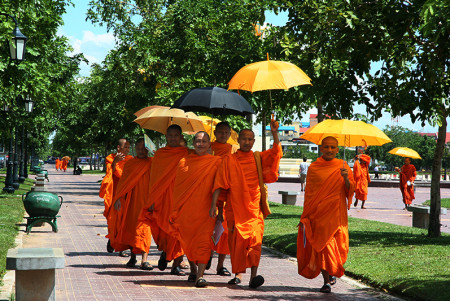
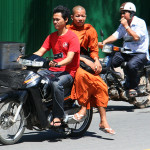
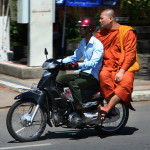
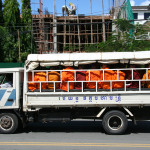
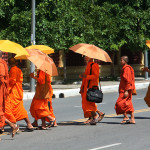
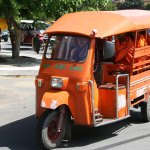
No comments yet.